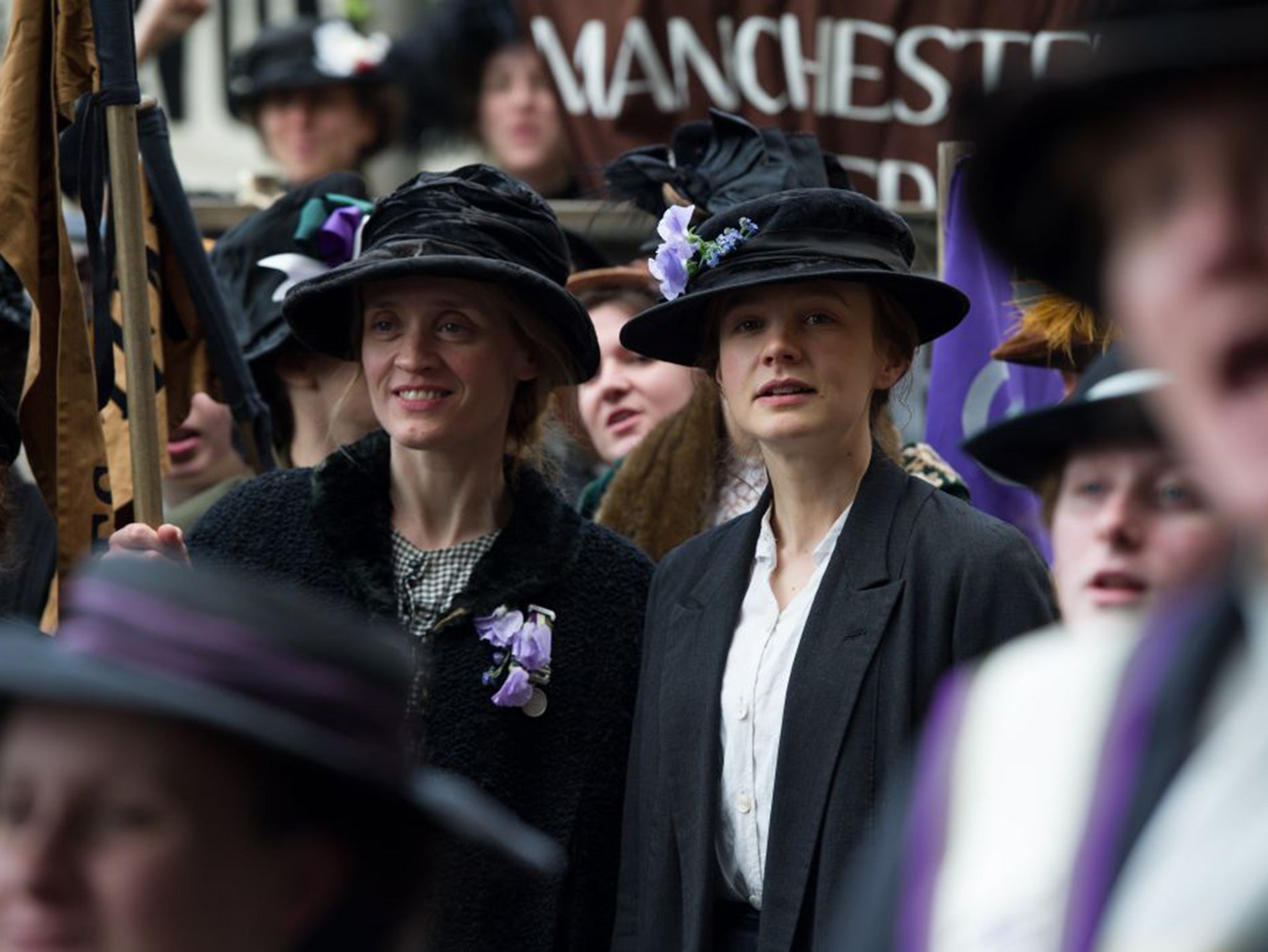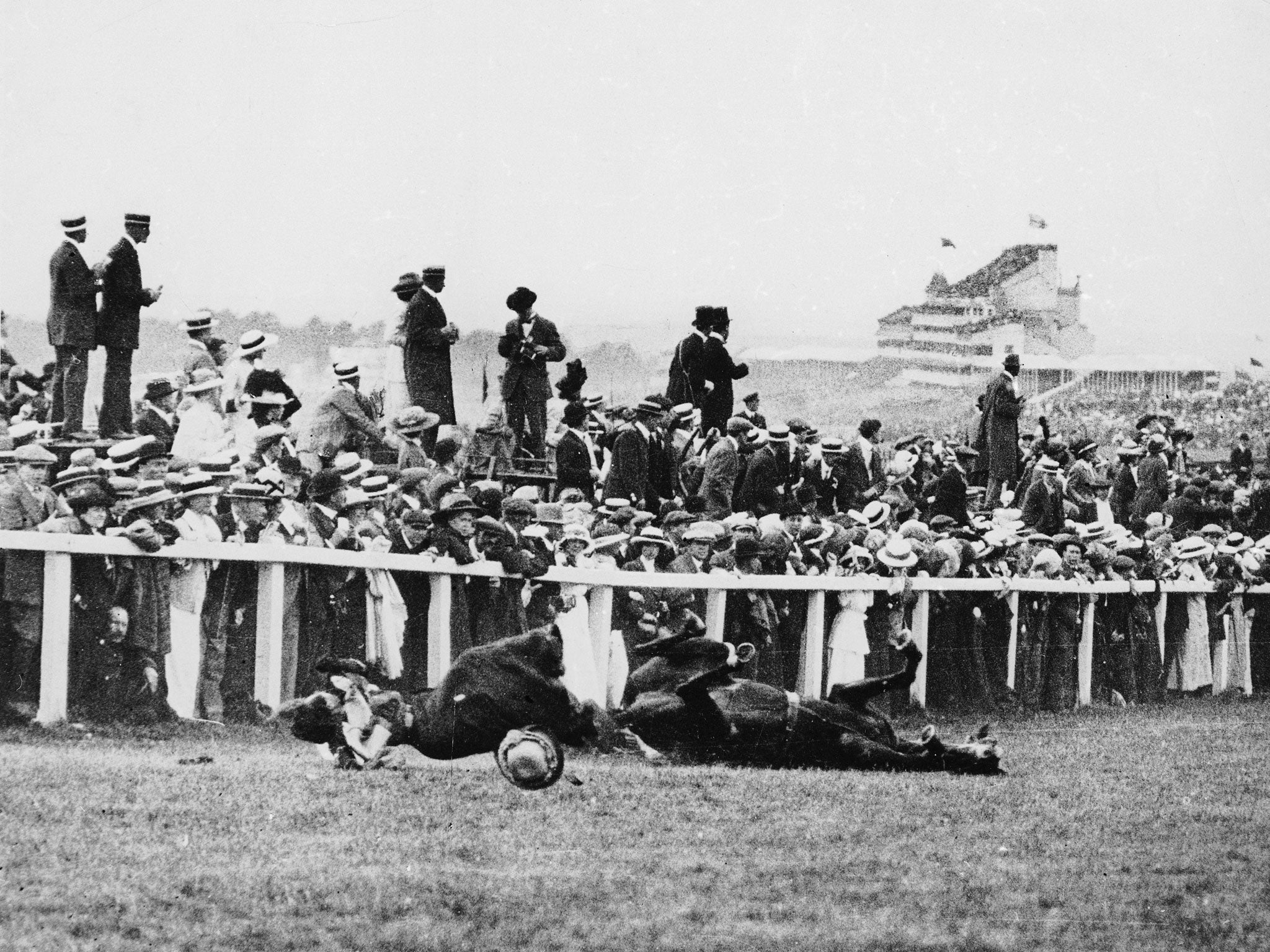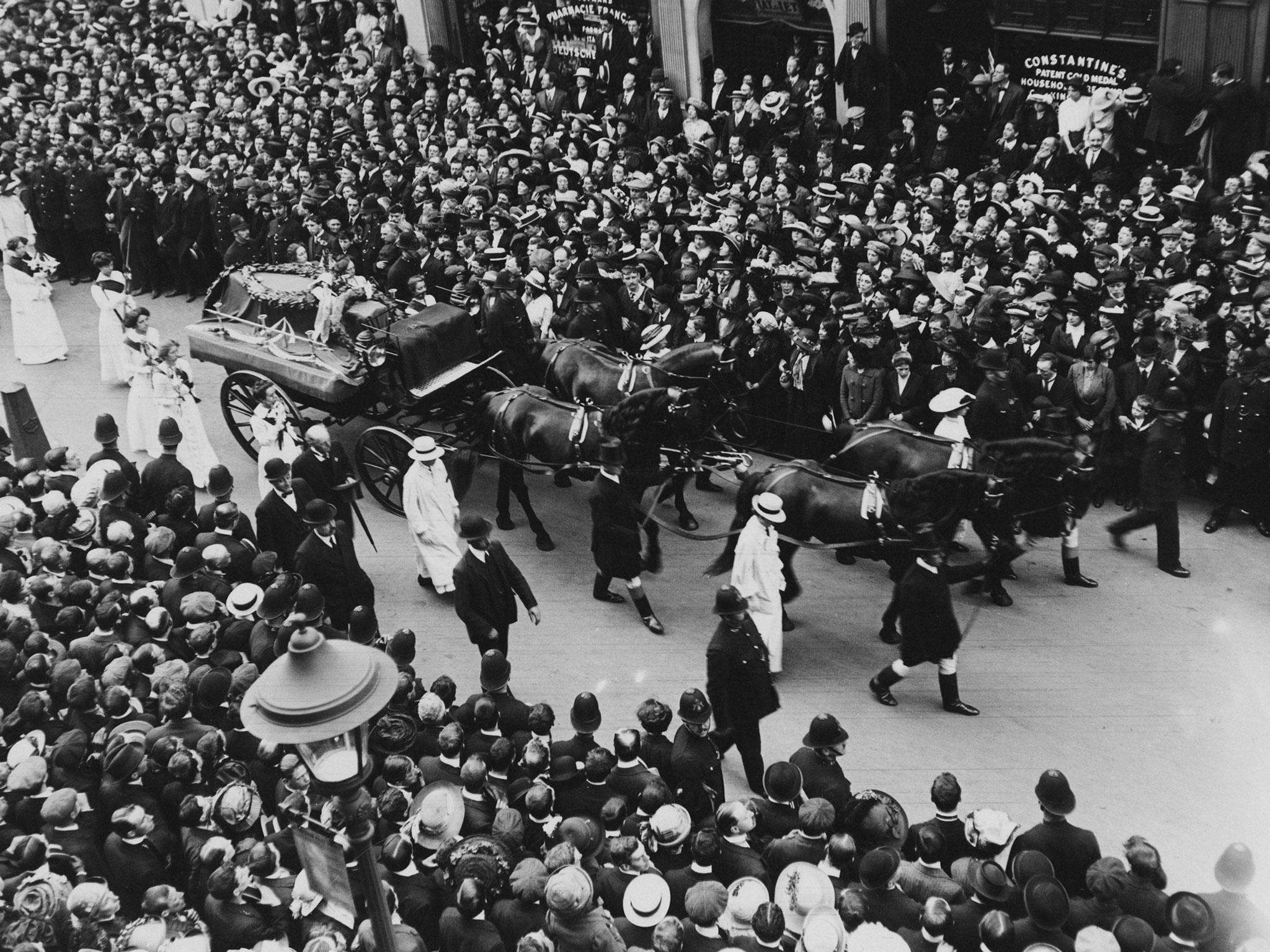International Women's Day 2016: Who was Emily Davison, the suffragette who ran in front of the King’s Horse?
As International Women's Day approaches, the Independent looks at the life and death of the suffragette
.jpg)
The suffragette Emily Wilding Davison is most widely remembered for her death.
Davison running out in front of the King’s Horse at the Epsom Derby in 1933 with a WSPU (Women’s Social and Political Union) flag pinned onto her jacket imprinted her name into history.
The 40-year-old was a member of the WSPU, dubbed by members of the press at the time as the 'Suffragettes'. A more militant faction of the women’s suffrage movement than the National Union Of Women's Suffrage Societies (NUWSS), the group gained notoriety for smashing the windows of politician’s homes and landing themselves in prison where they were subject to brutal force-feeding methods.
Yet the one event which proved the most shocking than any other in the history of the movement was Davison’s death.
Her funeral was organised by the Suffragettes and attended by those highest up in the ranks, including Emmeline Pankhurst and her daughters. It echoed a state funeral procession and featured in the haunting, closing scenes for the 2015 film Suffragette starring Carey Mulligan and Helena Bonham Carter.

Davison's character in the film, depicted by Natalie Press, is presented as determined, clever and ambitious.
Who really was Emily Wilding Davison and what questions remain about her death? The Independent spoke to historical consultant Dr Diana Atkinson, who advised the Suffragette filmmakers, to find out more.
She was capable of much more than being a governess
Davison was born in Greenwich to what Dr Atkinson describes as a “lower middle class” family.
Her education was interrupted by her father’s death which left the family with less money. After completing her education she became a governess, a position which Dr Atkinson believes “she can’t have been too thrilled about” given her education.
“Of course, it was for interesting families who were well off but at this time, she was capable of much more than that,” explains Dr Atkinson. Davison actually wanted to be a journalist.
Davison came from a large family as her father married twice. Dr Atkinson said that in terms of a partner, there was “no love in her life that I’ve ever been able to find out about”.
'That was her purpose, being a militant suffragette'
Dr Atkinson says Davison was excited by the thought of joining the WSPU and left her job as a governess to throw herself into the cause. “Her abiding love was being involved in campaigns whether it was organising or speaking or doing increasingly militant acts.”
These militant acts included storming the House of Commons, breaking windows and Dr Atkinson believes it was her who essentially invented setting fire to letter boxes as a militant action. She was jailed and force fed many times. “You name it, she did it. That was her purpose: being a militant suffragette”.
Davison was familiar with top ranking Suffragettes such as the Pankhursts. However, she wasn’t quite in the inner circle, where Dr Atkinsons says she aspired to be. She worked at the information department but had bigger ambitions and hoped to run her own branch.
The circumstances surrounding are death are still contested today
Did Davison run towards the horse with the intention of attaching something to it, in an action that had tragic consequences, or was it a planned suicide?
The answer is still uncertain, but Dr Atkinson believes Davison planned it. “She had a jacket with a WSPU flag pinned to it, to me that seems ritualistically planned.” The theories that it wasn’t planned as Davison had apparently brought a return ticket are disputed by Dr Atkinson, who says it was cheaper to buy a return ticket anyway.

Additionally, everyone at that time rode horses and were aware of the danger they posed.
“Nowadays you’d be forgiven for not knowing about horses but then they were everywhere and you knew how dangerous they were. How could she have imagined stepping out as a horse galloping at x miles an hour came her way that it would have pulled up for her and not mowed her down?"
It also wouldn't have been Davison’s first suicide attempt, according to Dr Atkinson, who says she had “suicidal moments” before including a highly dangerous instance where she tried to throw herself over a prison staircase during a long sentence at Holloway prison.
“The last six months of her life seem to be building up to something. Her death was a big moment - she got the attention she craved".
'Her death kept women's suffrage on everybody's lips'

Her death has gone down as a key point in the history of the women's suffrage movement. Thousands of column inches and headlines were dedicated to her passing. Much of it was negative and some individuals against female suffrage used it as ammunition to exemplify how women were “unhinged lunatics” who couldn’t be trusted to make political decisions. Dr Atkinson doesn’t think it brought women the vote any sooner, but it did remind the British government and wider world that the suffragettes weren’t going to stop until equality was reached.

"We can't say that it pushed the cause any further forward, but it kept women's suffrage on everybody's lips."
Commemoration of her death didn’t stop at the extravagant funeral, which was put on by the suffragettes and attended by those highest up in the ranks. The anniversary of Davison’s death was marked by the WSPU for several years, and each year this brought the issue of female suffrage to the forefront - until 1918 when married women attained the vote and in 1928 when universal suffrage was passed in the UK.
Suffragette is now available to buy on Blu-ray and DVD.
Join our commenting forum
Join thought-provoking conversations, follow other Independent readers and see their replies
Comments